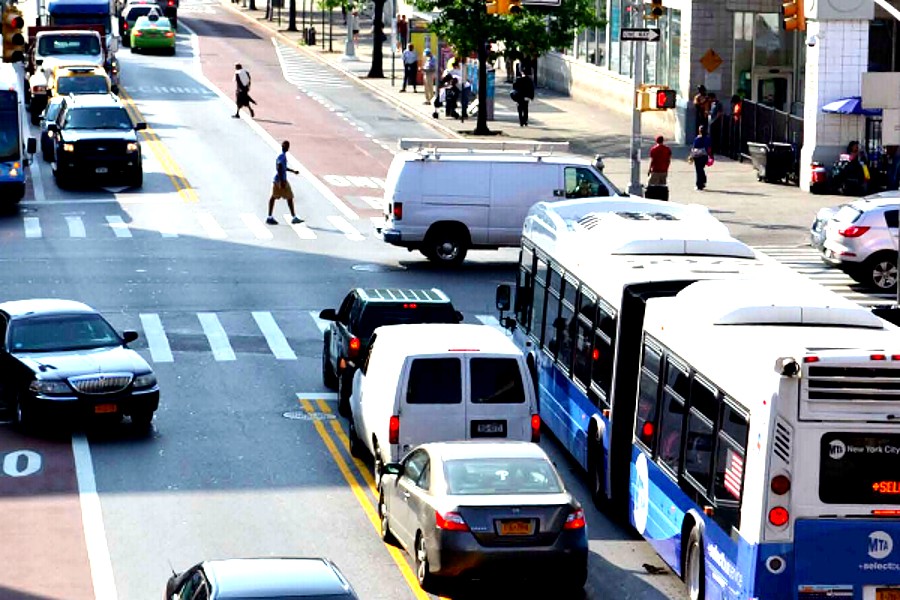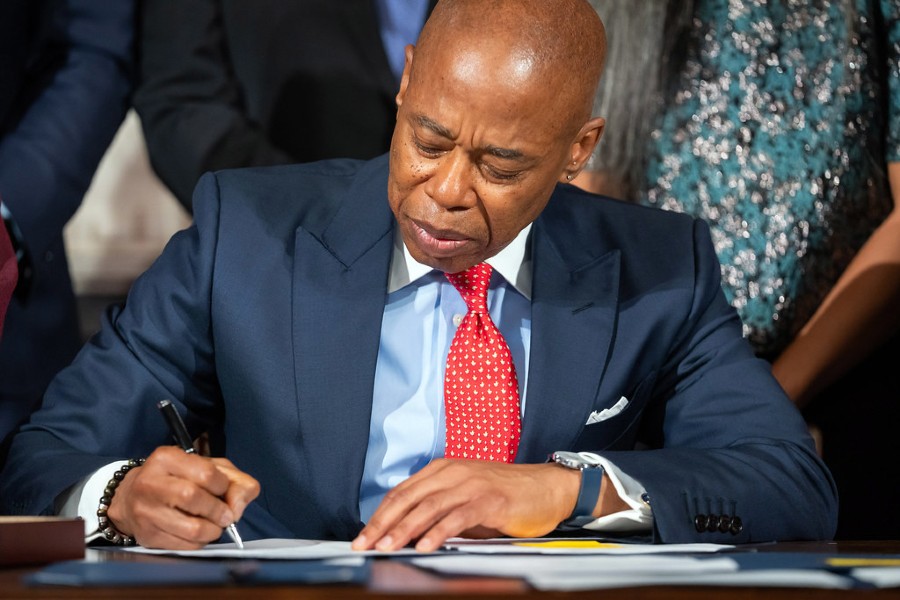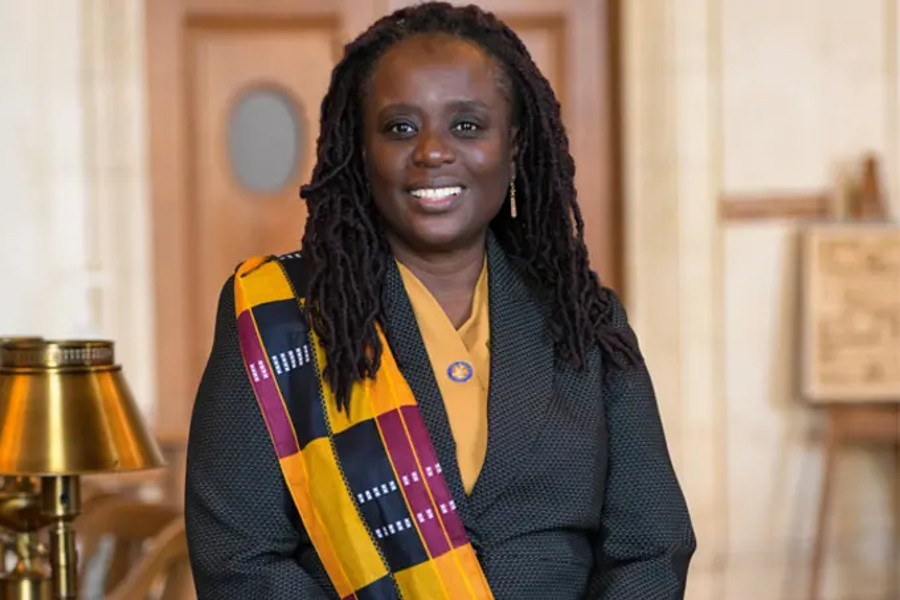
New York City Mayor Eric Adams and New York City Department of Citywide Administrative Services (DCAS) Commissioner Dawn M. Pinnock today announced the implementation of active intelligent speed assistance (ISA) technology.
This will be implemented in 50 city fleet vehicles as part of a new pilot program to reduce speed limits and save lives. ISA technology restricts a vehicle’s maximum speed, preventing it from exceeding local speed limits. The pilot program will offer an important tool to regulate and standardize safe driving among city employees and is the latest safety initiative to be implemented as part of the DCAS Safe Fleet Transition Plan (SFTP) for city fleet units.
“Speeding ruins lives, so we must take action to prevent it, and New York City is leading by example by implementing new technology to reduce speeds on city fleet vehicles,” said Mayor Adams. “Our streets must be livable for everyone, and this technology will ensure that speeding is impossible in city vehicles. We must ensure that everyone can share the street space safely, because traffic safety is public safety.”
“Under Mayor Adams’ leadership, the city is taking proactive steps to curb deadly speeding,” said First Deputy Mayor Lorraine Grillo. “This new pilot program by DCAS should serve as a model to other cities and states, showing how we can utilize technology to make our streets and roadways safer.”
“Speed governors can reduce fuel costs and, more importantly, save lives,” said Deputy Mayor for Operations Meera Joshi. “During my time at the Federal Motor Carrier Safety Administration, I proudly supported a policy to mandate this innovative technology for 18-wheelers. I’m thrilled to see DCAS adopt this new pilot program and look forward to building on the administration’s ambitious efforts to tackle the epidemic of deadly speeding on city streets.”
“Implementing new strategies and techniques to reduce driving speeds makes our fleet vehicles safer and will help protect all New Yorkers,” said DCAS Commissioner Pinnock. “As the standard bearer for driving safety, all city fleet operators have a responsibility to abide by local traffic laws, and that includes driving at or below the speed limit. The ISA pilot program will be instrumental in helping us all meet that mark and make our streets safer.”
“Intelligent speed assistance technology will help to ensure that the Department of Correction is doing its part to make the streets of our city safer for pedestrians and motorists alike,” said New York City Department of Corrections (DOC) Commissioner Louis Molina. “Investing in technology that will force drivers to slow down is a win for the agencies involved in the pilot, but also for residents in the communities we serve.”
“This administration is committed to making our streets safer and our city cleaner for New Yorkers, and we are proud to partner with DCAS on this pilot to implement ISA technology on our fleet,” said New York City Department of Parks and Recreation (NYC Parks) Commissioner Sue Donoghue. “Reducing speeds can help us slow down, reduce our emissions, and stay safe on the road. We are committed to exploring this technology and expanding it to more of our vehicles in the future if feasible.”
“BIC is excited to join DCAS and our other Vision Zero partners to participate in this innovative pilot program. The ISA program will explore new ways to make the operations of our city fleet safer and set a positive example for all New Yorkers on the road,” said New York City Business Integrity Commission (BIC) Commissioner and Chair Elizabeth Crotty. “BIC takes traffic safety seriously, and that includes our enforcement of safe driving in the commercial trade waste hauling industry as well as ensuring that the BIC fleet is driving safely.”
“Using telematics alerts, New York City has already cut excessive speeding by fleet units in more than half,” said DCAS Deputy Commissioner and New York City Chief Fleet Officer Keith Kerman. “DCAS will now implement active and passive intelligent speed assistance technology inside each pilot vehicle to further reduce illegal speeding and help keep New Yorkers safer.”
“Speeding is the number one cause of road fatalities in New York and similar cities, so we need to use everything in our toolbox to ensure people drive at safe speeds,” said Noah Budnick, interim executive director, Together for Safer Roads (TSR). “Technology companies and automakers are offering lifesaving solutions, like intelligent speed assist, to help drivers maintain safe speeds, and TSR applauds the City of New York for putting it to use. We have partnered with the city for over five years, and today’s announcement is another example of New York’s leadership in exploring new and emerging technologies to save lives.”
“This is a critical example of how to advance Vision Zero, and we commend New York City’s leadership,” said Leah Shahum, founder and director, Vision Zero Network. “Managing speeds is core to improving roadway safety, especially for those walking and biking, and this technology helps embed safe speeds in a fundamental, life-saving way.”
“Over the years, DCAS has been an innovative leader and strong partner in New York’s Vision Zero efforts,” said Philip Miatkowski, director of research, Transportation Alternatives. “We are excited to see the agency launch a pilot to explore intelligent speed assistance technology, a step that we called for in our recent policy agenda for the new administration. We urge the expansion of this technology across the entire city fleet, which would save lives here at home and set a bold standard for cities across the country to follow.”
“Speeding kills. Lower speeds save lives. Each 1 mph increase in speed results in nearly a three-percent increase in the mortality rate of a crash. Preventing speeding in the city fleet is an important way to make streets safe, and we are very encouraged by this new DCAS pilot for intelligent speed assistance,” said Ralph Munoz, member, Families for Safe Streets, whose brother was killed by a speeding driver in 2013 and whose mother was killed in a separate car crash in 2008.
Unlike similar speed reduction technology, the active ISA program installed in the city fleet will not just set a maximum speed for the vehicle but will also be adaptable based on the local speed limit. There are two modalities of ISA: active and passive. With the active system, if the operator of a fleet vehicle attempts to drive over the local speed limit, the ISA technology will activate and slow the vehicle down automatically. Alternately, the passive system will alert the driver when they are driving above the speed limit. DCAS will also be expanding passive driver alerts through the city’s existing telematics system.
The pilot program — totaling more than $80,000 in retrofits and installations — is starting with vehicles from DCAS, DOC, BIC, NYC Parks, the New York City Department of Transportation, and the New York City Department of Environmental Protection, and the New York City Taxi and Limousine Commission.
DCAS will also work with NYC Parks to test similar ISA functionality that will come with 14 new, all-electric Ford Mach Es that rolled out this past spring. The program will be closely monitored over the next six months.
Upon the pilot’s completion, DCAS will partner with the U.S. Department of Transportation Volpe Center to prepare a report on the initial implementation. The next steps will be determined based on a full assessment of the pilot program.
Through the SFTP, DCAS is specifying the highest level of safety available on new cars and trucks and implementing safety retrofits. DCAS has already installed over 65,000 safety improvements to city fleet units, including driver alert systems, telematics, truck side-guards, automatic braking, backup alerts, dash cams, and heated mirrors.
In addition to the SFTP, DCAS has implemented a wide variety of safety measures as part of Vision Zero.
Other measures include the city’s fleet’s first CRASH management system, the nation’s largest rollout of live vehicle tracking devices managed through the city’s Fleet Office of Real-Time Tracking, the nation’s leading program of truck safety guards, barring hands-free phone use by fleet operators and providing safety training to over 76,000 city employees.
Become a Harlem Insider!
By submitting this form, you are consenting to receive marketing emails from: Harlem World Magazine, 2521 1/2 west 42nd street, Los Angeles, CA, 90008, https://www.harlemworldmagazine.com. You can revoke your consent to receive emails at any time by using the SafeUnsubscribe® link, found at the bottom of every email. Emails are serviced by Constant Contact








